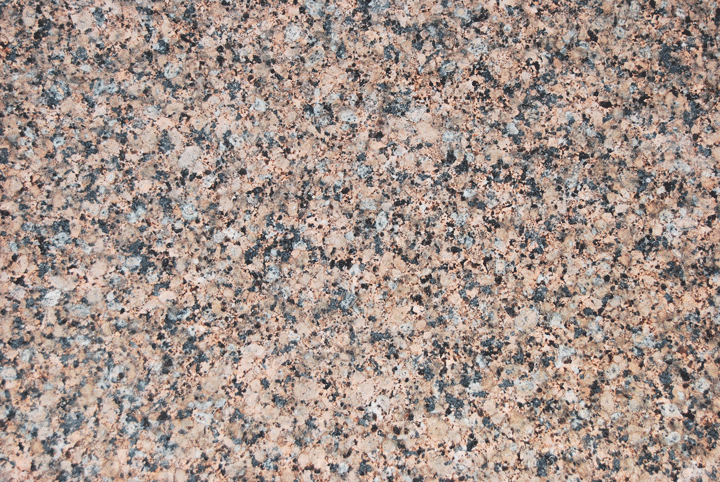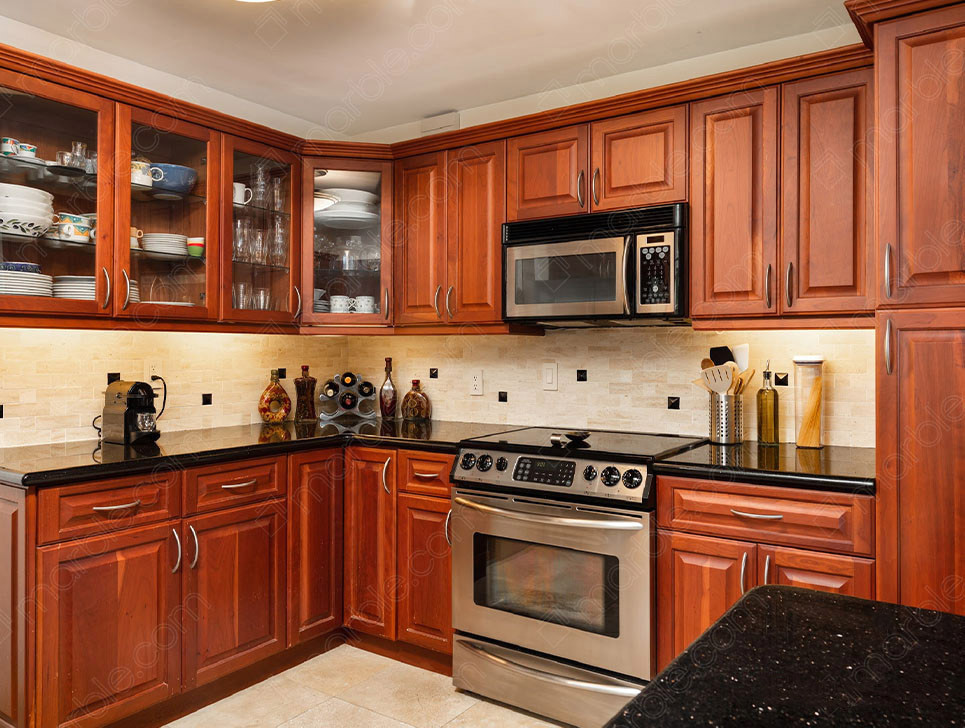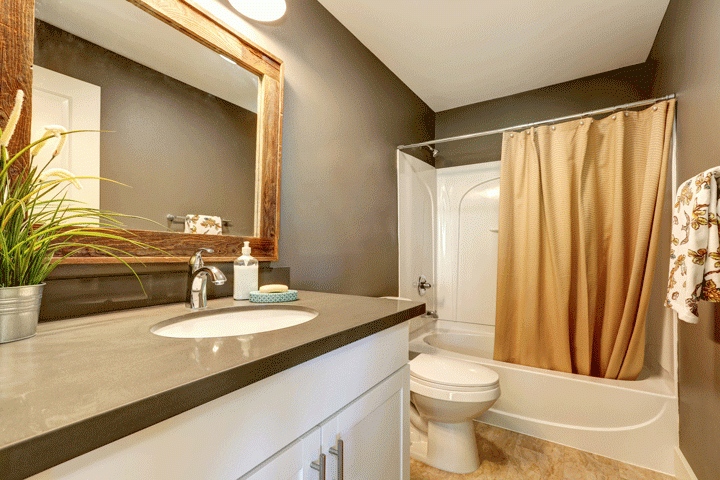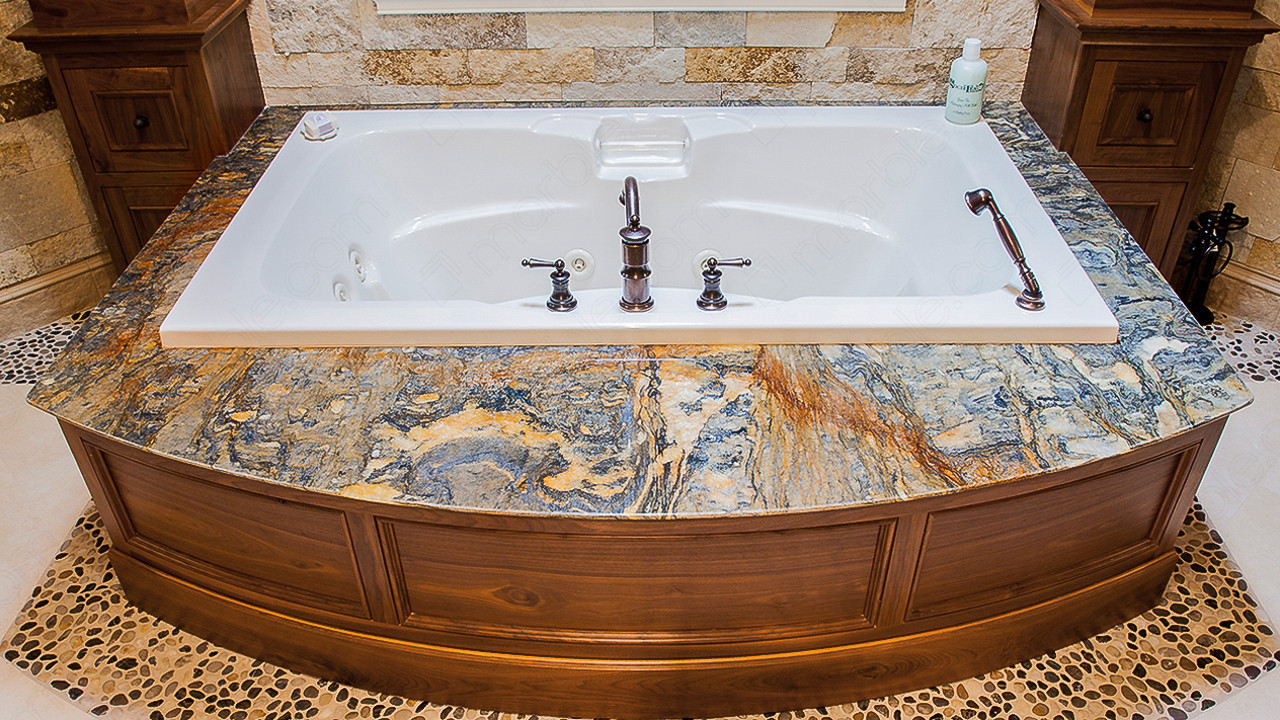
Table of Contents
Granite has been one of the world’s most popular building materials for countertops since the late 1980s. The natural stone soared in popularity after costs decreased when it started to be quarried worldwide. Before this time, granite was typically a stone that was only affordable for wealthy homeowners. In today’s age, you can find granite countertops in a countless number of kitchens and bathrooms across the world.
While actual granite is a popular stone countertop material, there is an alternative that you should keep an eye out for. Many companies try to push faux granite countertops as the actual stone. To avoid being fooled, follow the steps explained in this guide.
[get_quote]
Why is Granite So Popular?
There are several reasons that granite is such a popular countertop option. Out of many reasons, the most significant are its appearance, its durability and its easy maintenance.
Granite: Appearance
Granite is a beautiful natural stone that comes in many different colors and patterns. There are so many options for you to choose from, meaning you are almost guaranteed to find something that you like. The many different types of the stone feature unique looks, and each individual slab will be different than the others. This contributes to the appeal of having granite in the home.
Granite: Durability
One of the other factors that makes granite so desirable is the material’s durability. Granite is one of the most durable natural stones that you can find. This makes granite an especially great choice for kitchen countertops, as the surface will be able to withstand the wear and tear that it will see in the kitchen.
Granite: Maintenance
Lastly, one of the reasons granite is so popular is because of the easy maintenance that the countertops require. While you will have to maintain the countertops, the maintenance requirements are minimal compared to other countertop options you have. All you need for daily cleaning is warm soap and water. While you need to re-seal the surface, you will only need to do so roughly once a year. Sealing requirements will depend on the specific type of granite, but the stone still does not require the frequent re-sealing that many other natural stones do.
Where Does Granite Come From?
Granite comes from quarries worldwide. The natural stone is often quarried in locations such as Brazil, India and the United States. The wide availability of granite contributes to the stone’s popularity.
What is Fake Granite?
Fake granite is just what it sounds like – countertops that are made to imitate the beauty of the natural stone. Many countertop surfaces can be made to have the look of granite, from engineered stone to laminate to countertops that are even painted to have a granite look.
[get_quote]
How Can I Spot Fake Granite?
There are several ways you can tell that a countertop is fake granite, rather than the actual stone. Although the imitation surface may look real at first, find out how you can determine that it is not the real thing.
| Check the Cost |
| Check the Appearance |
| Test the Porosity |
| Tap the Surface |
| Check the Seams |
Spotting Fake Granite: Check the Cost
In general, granite will cost between $35 to $75 per square foot. If you find a stone that is supposedly granite that is significantly less than this cost, you should be suspicious. If the stone is cheaper than this range, it is likely that you are being presented fake granite. If the “granite” costs less and is not fake, it is very likely to be poor quality stone.
Spotting Fake Granite: Check the Appearance
This may be the tough part. Since faux granite countertops have been made to mimic the look of granite, you may not be able to tell the difference upon originally looking at the surface. However, there are some aspects of the appearance that give away that the granite is fake. If you see that the slab has the exact same pattern throughout, you are not looking at real granite. Granite is a natural stone, which means that there are always some imperfections present. In addition, because granite is natural, each slab is unique. Even slabs that are from the same quarry will have differences. Natural granite countertops should look like this.
Spotting Fake Granite: Test the Porosity
Testing the porosity of the granite is an easy way to tell if it is fake or not. Natural granite is porous, and therefore will absorb water that is spilled on the surface (unless it has recently been sealed). On the other hand, fake granite will be non-porous. Take a small amount of water and apply it to a small area of the stone. If the water absorbs within a few minutes, you have real granite that is not sealed. However, if the water does not absorb at all, it is very likely that the granite is fake. The only instance in which this granite will be real would be if it is already sealed, which is not likely considering that you often have to do the sealing on your own. In any case, you should be suspicious.
Spotting Fake Granite: Tap the Surface
If you lightly tap on the back of the surface with a small hammer, real granite should produce a ringing sound. To the contrary, fake granite will make a small click sound. If the stone produces the latter of the two sounds, you will know that it is not the natural stone.
[get_quote]
Spotting Fake Granite: Check the Seams
Natural granite countertops will have seams somewhere on the surface. Once you find the seam, take a close look. If the pattern on the other side of the seam is slightly different, it is likely real granite. However, if the pattern is exactly the same, it is likely that you have fake granite. Lastly, if there is no seam at all, you definitely have a fake granite surface.
Additional Helpful Information
If you are installing granite countertops in your home, you will need to hire a professional to do so. Installing a granite countertop is not a DIY job. If the “granite” countertop does not require professional installation, you should be suspicious of the material. If this is the case, you likely have a solid surface countertop that is modified to look like granite. Even quartz countertops that look like granite will require professional installation.
Granite countertops represent natural beauty in the home. However, do not be fooled into buying fake granite countertops. There is no true replacement for the beauty and durability that you will get from natural granite. This guide will help you determine if the granite you are looking at is real or fake.
















 The article helped me immensely
The article helped me immensely
 I’m now more informed on the subject
I’m now more informed on the subject
 I have questions about Marble.com
I have questions about Marble.com
 The article was not accurate at all
The article was not accurate at all
 There is a serious lack of information
There is a serious lack of information
 I have questions about Marble.com
I have questions about Marble.com